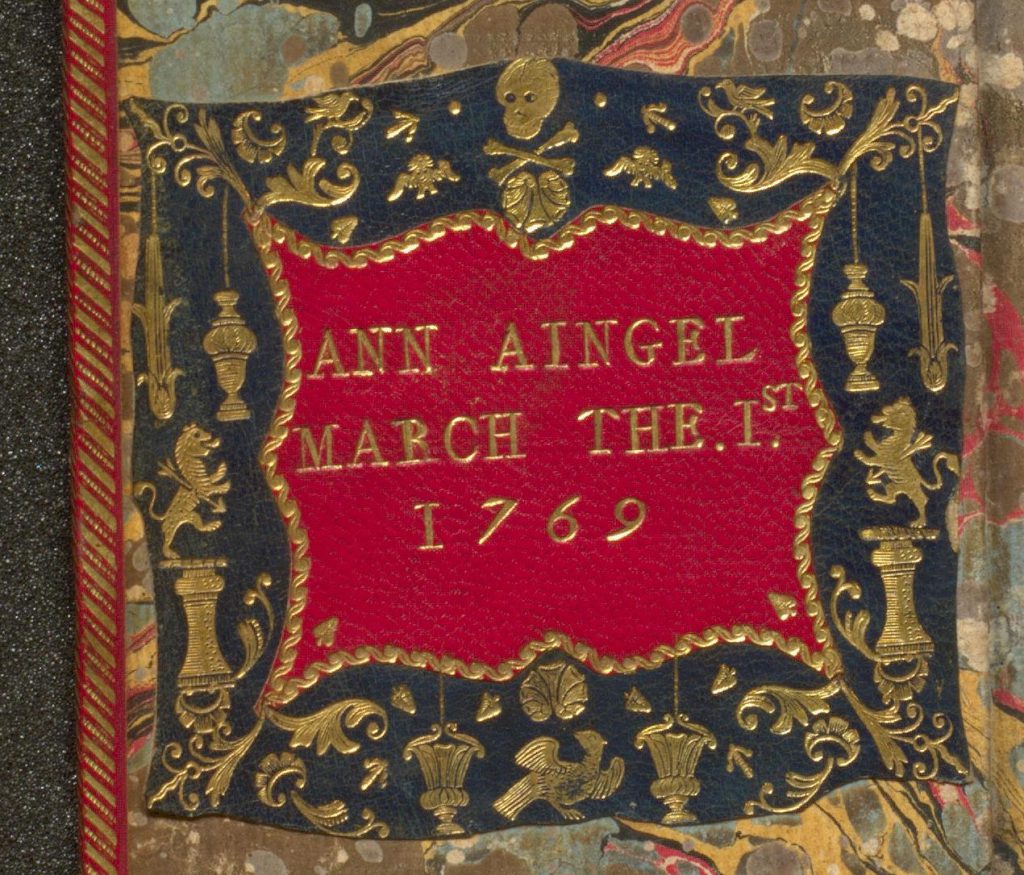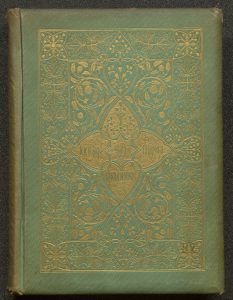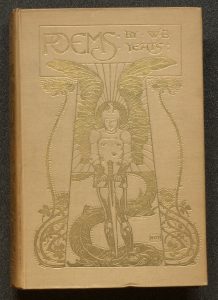Gilt and gold-tooled (or tooled in gold) are terms used to describe the techniques of applying gold decoration to a book’s page edges and its binding.
In gold-tooling, individual engraved metal hand tools are heated and applied through gold leaf to impress the design on the book’s spine and covers. Larger designs use an engraved metal block in a blocking or arming press, for example a centrepiece block or corner blocks.The design is then described as blocked in gold rather than tooled in gold.
If the binder’s tools or blocks are used straight onto the bookbinding material the decoration is described as blind-tooled (tooled in blind), or blocked in blind. A panel-stamp is a single large block used to impress a design onto the book cover; the term is used particularly of ‘blind-stamped’ 16th-century bindings, but the pretty cover designs of 19th-century literary annuals or gift books use essentially the same technique.
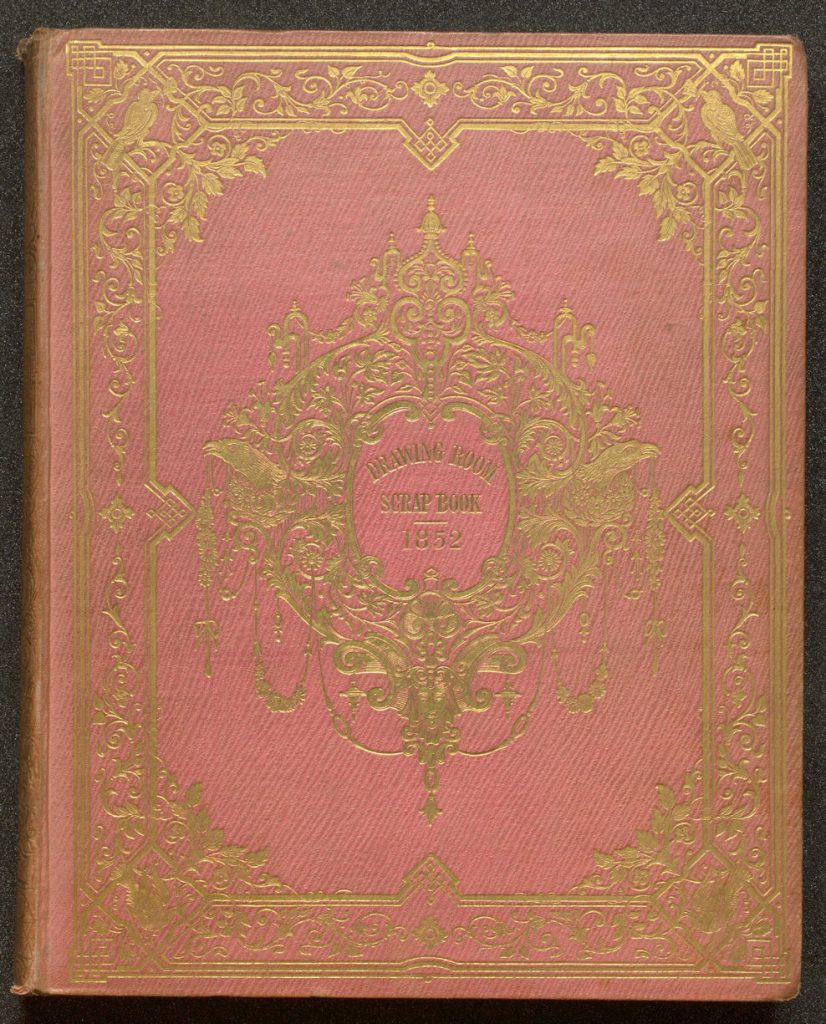
SPEC Annuals 1c.F333
Whether the material is leather, vellum, or cloth, and the design is tooled or blocked, these techniques have produced some of the most stunning bookbindings from all periods.
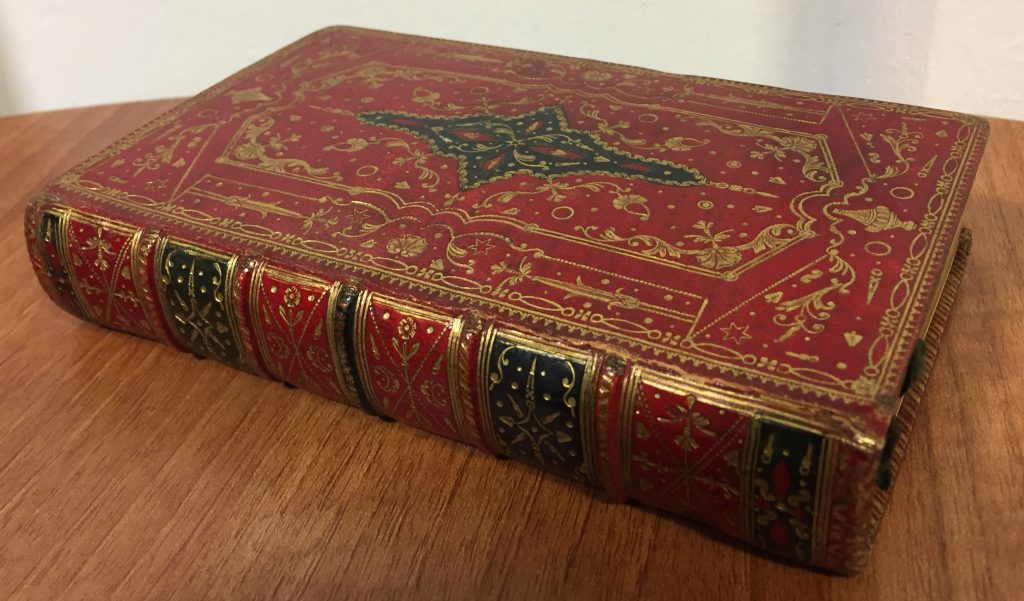
Gilding describes the process of applying gold leaf or gold powder to the trimmed edges of the pages of a book. As well as giving the volume a more luxurious appearance, the smooth shiny surface serves the practical function of resisting dust. Gilt edges may be made more ornate by tooling a design onto the gilded surface, to produce gauffered edges.
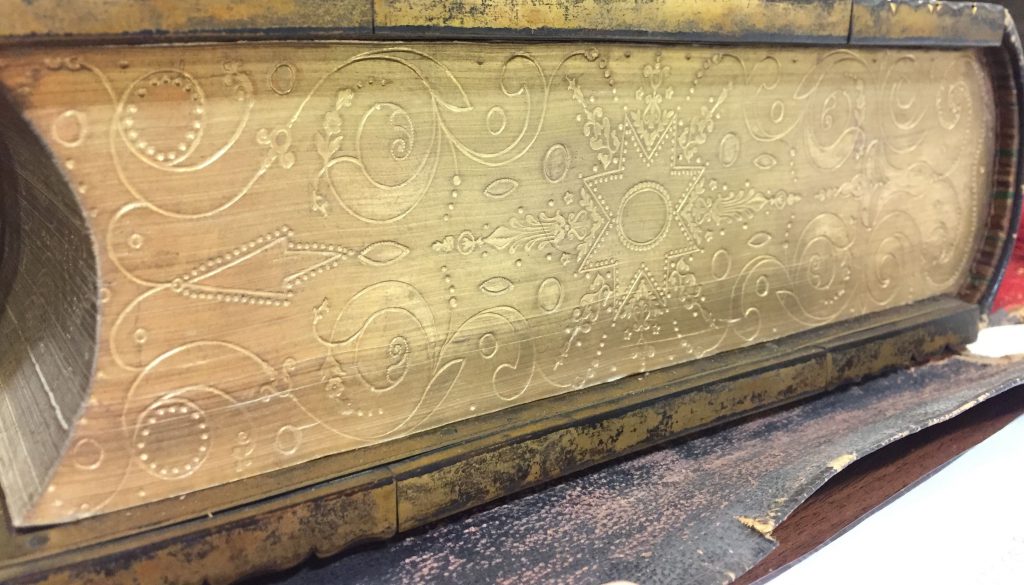
Resources and further reading:
The Language of Bindings glossary at Ligatus.
The British Library Database of Bookbindings
The British Armorial Bindings database at the University of Toronto
